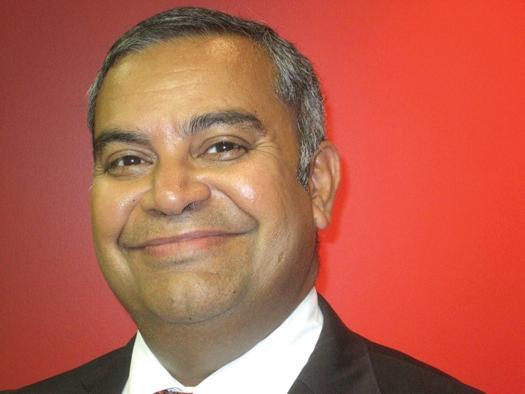
3 minute read
The threat of home-grown terrorism
from 2013-08 Sydney (1)
by Indian Link
civilian population of the US, or any segment thereof, in furtherance of political or social objectives”.
skills which can lead to acts of terrorism.
Srinivasan,
Iyer
ADVERTISING MANAGER
Vivek Trivedi
02 9262 1766
ADVERTISING ASSISTANT
Nitika Sondhi 02 9279 2004
DESIGN
Danielle Cairis
Proud member of:
Indian Link is a fortnightly newspaper published in English. No material, including advertisements designed by Indian Link, may be reproduced in part or in whole without the written consent of the editor. Opinions carried in Indian Link are those of the writers and not necessarily endorsed by Indian Link. All correspondence should be addressed to
Indian Link
Level 24/44 Market St, Sydney 2000 or GPO Box 108, Sydney 2001
Ph: 02 9279-2004
Fax: 02 9279-2005
Email: info@indianlink.com.au www.indianlink.com.au
Television coverage of the dramatic 24 hours since the FBI released the photos of the alleged two Boston bombers seemed like a Hollywood movie. Thousands of FBI, ATF agents and heavily armed police walking the streets or being driven across in buses, armoured carriers on the roads, police cars with flashing lights, distant sounds of gun fire - all highlighted the strength of the internal security forces of the US as they experienced for the first time the effects of home-grown terrorism. Tamarlan Tsarnaev, 26, and Dzhokhar Tsarnaev, 19, ethnic Chechens, immigrated to the US roughly a decade ago, and were legal residents living with their parents in a Boston suburb. The younger brother became a citizen last year.
A motion introduced in the US Senate defined home-grown terrorism as the “use, planned use, or threatened use of force or violence by a group or individual born, raised, or based and operating primarily within the US or any possession of the US to intimidate or coerce the US government, the
The US, UK, much of Europe and Australia, all have largely migrant populations and face an increasing risk of home-grown terrorism. While considerable attention has been made in developing means to prevent overseas terrorism activities reaching the homeland through increased surveillance, airport security and co-operation between various countries, home-grown terrorism is a more difficult evil to combat. While international plots are an ever-constant threat, the challenge now being faced by authorities is the nightmare of smallscale attacks carried out by individuals located within the country itself.
Many settlement issues emerge with second generation migrants: this was evidenced in the London bombings of 2007 and in the latest Boston attack. The youth can be at odds with the values and lifestyles of their new home. Coupled with socio-economic issues such as lack of economic growth, high youth unemployment rates, increasing levels of anti-austerity unrest especially across Europe, and rumours of contingency plans to restrict immigration in the event of a financial collapse, together create a perfect storm for the educated youth who have the means through the internet to pick up
It will be foolhardy to take the eye off the ball on the issue of terrorism, especially of the home-grown variety.
Prime Minister Gillard announced in January that the threat of terrorism as we know it, is over, with her national security strategy aiming to build closer links with Asia and toughen Australia’s cyber security defences. At the same time Ms Gillard warned that the budget for domestic security will only get tighter. This seems to be a bold view, perhaps akin to former President George W. Bush landing on the deck of USS Abraham Lincoln in May 2003 and making that ‘mission accomplished’ announcement. Over hundreds of thousands of lives have since been lost in Iraq.
From a migrant community point of view, it is important to emphasise the significance of acceptance to our youth growing up in Australia. Society is a product of evolution and is a sum of its entire people. While the views and lifestyles of others may not be similar to ours, the discussion needs to centre on contributing back to society via a different value system: if there is good in it, it will be picked up and add another step in the evolution of our overall society. Society and lifestyles are what we contribute to it rather than what is imposed on us.
SPIRITUAL
Shree Ram Sharnam weekend retreat
May 4-5
Nourish the soul and cleanse the mind at a weekend retreat.
Activities include meditation (dhyaan), jaap, recital of the Shree Amritvani and Bhakit Prakash singing of bhajans and kirtans, prachaar (deliverance of holy sermons) two hours of complete silence (mouun). Shree Ram Sharnam Spiritual Centre at 23 Sheba Crescent, South Penrith. Details: Vimal Rao 0415 483 459.
Yoga Classes
May 4 7am-9am (Ryde), 5pm-7pm (Quakers Hill) Hath Yoya, 16 week course. West Ryde Community Hall, 3-5 Anthony Road, Ryde or Performance Space, Quakers Hill High School, 70 Laor Road, Quakers Hill. Yoga classes for children and seniors also available.
Details: Raja 0402 789 109 www.spiritofindia.org









